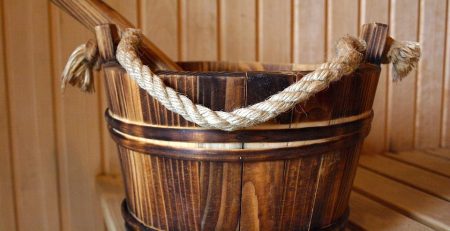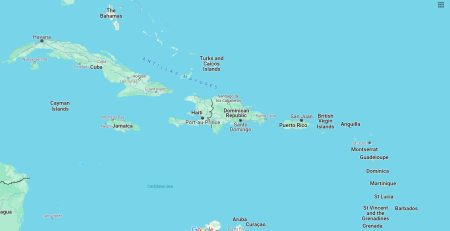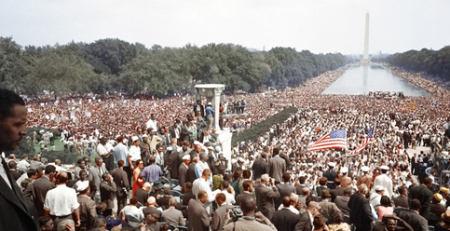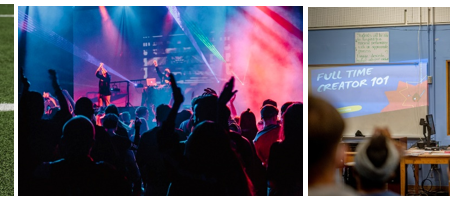And the Bridge Came a Tumblin’ Down: The Collapse of the Key Bridge in Baltimore
I live just south of Baltimore and the Francis Scott Key Bridge is only three exits away from me along the Baltimore I-695 Beltway. And yet, I almost never used it. My memory of going over the bridge is a special one. I had brought my 21-year-old niece up from Texas to say goodbye to her estranged father; he was living with us while he was in hospice. I drove two loops around I-695, crossing the Key Bridge twice, as I let her tell her story, and give me a chance to know her. We had never met before. The Key Bridge was a magnificent bridge. Over a mile and a half long, spanning the Patapsco River, from Hawkins Point in Baltimore to Sollers Point in the eastern suburb of Dundalk. A steel-arch truss bridge, raised over 150 feet in the air with pilons 50 feet deep, the Key Bridge allowed the largest of boats to pass through on their way to the Port of Baltimore. It also took 34,000 cars and trucks over the Patapsco River every day.
More than just a Bridge
In some ways, Baltimore is the gateway to Philadelphia, New York City and Boston and to get there from DC, you must go through or around the city. The fastest way is through the two tunnels, Fort McHenry and Baltimore Harbor, which pass under the Patapsco River. I can hop in my car and drive to the Baltimore Harbor Tunnel – built in 1957 – within 5 minutes, bypassing the Key Bridge. But many trucks are too big to go through the tunnels or carry hazardous cargo that isn’t allowed. When the I-695 Beltway for Baltimore was completed in 1962 – without the bridge – trucks had to go around the long way, on the west side. The Key Bridge construction was finished in 1977, finally giving the trucks a shorter route; 4,900 trucks have been crossing the Key Bridge per day. Now that the bridge has been destroyed, the trucks will be forced to go the long way around the city again, but there will be some newcomers to the tunnels, including those with claustrophobia who had been avoiding it. I took my first trip through the tunnel yesterday, and it was exactly as I expected. Those who feared the tunnel crept through it at 15 mph. And it’s just going to be like that for a long time.
The Key Bridge was also a major monument in the lives of Baltimoreans living in neighborhoods of Dundalk, Sparrows Point, Fells Point, Hawkins Point, and other neighborhoods along the Patapsco River. Elders remember the dangers of working on the bridge, residents remember crossing it and looking over at the Baltimore skyline, while workers from the tops of the Baltimore skyscrapers could look down the Patapsco and see the bridge. Teenagers drove over it to celebrate their new licenses, crabbers worked below it. Historians believe that the bridge was less than 100 yards from where Francis Scott Key wrote the poem which became our National Anthem. Forty-seven years of memories were frozen in the few seconds it took for the Dali container ship to hit the Key Bridge pilon and cause its collapse on March 26th at 1:30 in the morning.
The collapse of the Key Bridge completely stopped the passage of commercial ships to the Port of Baltimore except for the privately owned Tradepoint Atlantic terminal which sits on the bay side of the bridge. The Tradepoint Atlantic terminal is used by VW and BMW and is trying to accept additional ships originally routed for the rest of the port, but its container capability is still being built. Beyond the bridge, no ships can go in; no ships can come out. Forty vessels are stuck in the port waiting for a channel that will let them out. But for as long as there is debris from the center of the bridge in the deepest parts of the Patapsco River, the Port is effectively closed to large vessels. Two channels have opened for the ships used to help clear the debris but aren’t large enough for commercial use.
Affecting the Port of Baltimore
Most people outside of Baltimore don’t know about the significance of Port of Baltimore – I certainly didn’t. It may not be the largest port in the US, but it is the largest “roll-off, roll-on” port. RoRo is for anything that can drive into or out of the ship or be moved with a rolling platform instead of hoisted by crane; RoRo is the best way to move cars, trucks and farm equipment as well as cargo that is too tall or too wide to fit in a 20’x8’x8’ container, like the ones on the Dali. In fact, the Port of Baltimore imports and exports more cars and trucks than any other port in the US – as many as 850,000 each year. And not just because of the RoRo ship capability, the Port of Baltimore has also developed the infrastructure to process the cars – accessorizing, inspecting, labeling, and has the fastest access to the north, south and mid-west of the US. The port also facilitates exports of coal, liquified natural gas, wastepaper, ferrous scrap, headed to global markets.
The Port of Baltimore does more than just RoRo shipping. The Port can also accommodate container ships like the Dali which can carry 10,000 containers stacked on top of each other – the Dali was carrying nearly 5000 containers when it hit the bridge – or even larger ships, carrying twice as many. The Seagirth terminal has a 275-acre lot for storing containers until they can be moved to their final destinations by truck or rail. Massive cranes move the containers from the ship to a shuttle which takes the container to the lot where it is restacked by another crane, and an entire container ship can be unloaded in 3 days.
Perhaps you can tell – I am fascinated by what I am learning, how I am coming to understand the importance of this major industrial complex only a few miles away from me, and how I am finding myself mourning the Key Bridge, not so much because it was a beautiful bridge, but because of what it’s going to do to Baltimore. Nearly 8,000 workers have been directly impacted by the closing of the Port. The Port has 5 public and 12 private terminals along the Patapsco River, handling the cranes and shuttles for the container ships, the RoRo loading and unloading, and car processing. The Port also handles regular cruise trips with Carnival and Royal Caribbean, and there are two ships that cannot dock; they must re-route to Norfolk and provide bus shuttles to reunite the passengers with their cars… parked at the Port. The Port is even the base of operations for hundreds of crabbers, scouring the waters for Maryland’s state crustacean. Simple things, like a charter boat that would leave the port for fishing in the Chesapeake Bay are on hold. There is too much debris from the bridge to make the passage safe, and the Dali is still stuck in the middle of the river.
What’s Next
It has now been a week since the Dali hit the Key Bridge with the force of a rocket launch, causing it to collapse in less than a minute. There are now two emergency channels open with a depth of 15 feet – enough for a barge or tugboat, and the ships needed to clear the debris. A third channel is planned. The most recent news is that a large enough part of the center section of the river will be cleared of bridge debris for the Port to re-open in May. I am greatly encouraged by this because of the significance of the Port to Baltimore’s economy. I may even take a water cruise as a token of support. But the bridge itself will not be replaced for many years to come. I’m hoping that we will see the new design within a year, and that it will be a second, equally beautiful bridge that Baltimoreans can be proud of. As the trucks wait for their route, and the neighbors wait to start new memories.
If you would like to see a video of the collapse, check out this video here.
To learn more about Port of Baltimore’s RoRo operations, see this video.
A video of Port of Baltimore’s Seagirth Container terminal is here.
For more information about how shipping terminals process containers, view here.











Comments (16)
hello there and thank you for your information – I have certainly picked up something new from right here.
I did however expertise a few technical points using this web site,
as I experienced to reload the web site lots of times previous to
I could get it to load correctly. I had been wondering if your web host is OK?
Not that I’m complaining, but sluggish loading instances times will very frequently affect your placement in google
and could damage your quality score if ads and marketing with Adwords.
Well I am adding this RSS to my e-mail and could look out for much more
of your respective interesting content. Ensure that you update this again soon..
Escape roomy lista
Really great info can be found on weblog.?
I used to be able to find good advice from your blog posts.
Hi, I do believe this is a great blog. I stumbledupon it 😉 I may return yet again since i have bookmarked it. Money and freedom is the best way to change, may you be rich and continue to guide others.
Can I simply say what a comfort to discover somebody who truly knows what they’re discussing online. You certainly realize how to bring an issue to light and make it important. More and more people really need to read this and understand this side of your story. I was surprised you aren’t more popular because you most certainly have the gift.
A motivating discussion is worth comment. I do think that you need to publish more about this subject, it might not be a taboo subject but typically folks don’t discuss such issues. To the next! Best wishes.
Greetings, There’s no doubt that your website might be having internet browser compatibility problems. Whenever I look at your website in Safari, it looks fine however, when opening in Internet Explorer, it has some overlapping issues. I merely wanted to give you a quick heads up! Apart from that, fantastic site!
Aw, this was an incredibly good post. Taking the time and actual effort to generate a very good article… but what can I say… I procrastinate a lot and never manage to get anything done.
Hi, I do believe this is an excellent site. I stumbledupon it 😉 I’m going to come back yet again since i have saved as a favorite it. Money and freedom is the greatest way to change, may you be rich and continue to guide other people.
An outstanding share! I have just forwarded this onto a colleague who has been doing a little research on this. And he actually ordered me breakfast because I found it for him… lol. So allow me to reword this…. Thank YOU for the meal!! But yeah, thanx for spending some time to talk about this subject here on your web site.
An outstanding share! I have just forwarded this onto a coworker who was doing a little homework on this. And he in fact ordered me dinner due to the fact that I stumbled upon it for him… lol. So allow me to reword this…. Thanks for the meal!! But yeah, thanks for spending the time to talk about this subject here on your web page.
This is a topic that is close to my heart… Many thanks! Where can I find the contact details for questions?
Hello there! I could have sworn I’ve been to this blog before but after browsing through many of the posts I realized it’s new to me. Nonetheless, I’m certainly pleased I discovered it and I’ll be bookmarking it and checking back often!
I needed to thank you for this wonderful read!! I certainly loved every little bit of it. I have got you book marked to check out new things you post…
I’m amazed, I must say. Rarely do I encounter a blog that’s both educative and entertaining, and without a doubt, you’ve hit the nail on the head. The issue is something not enough folks are speaking intelligently about. I am very happy that I came across this in my search for something relating to this.
I seriously love your blog.. Pleasant colors & theme. Did you make this website yourself? Please reply back as I’m trying to create my own personal blog and would love to learn where you got this from or just what the theme is named. Many thanks!